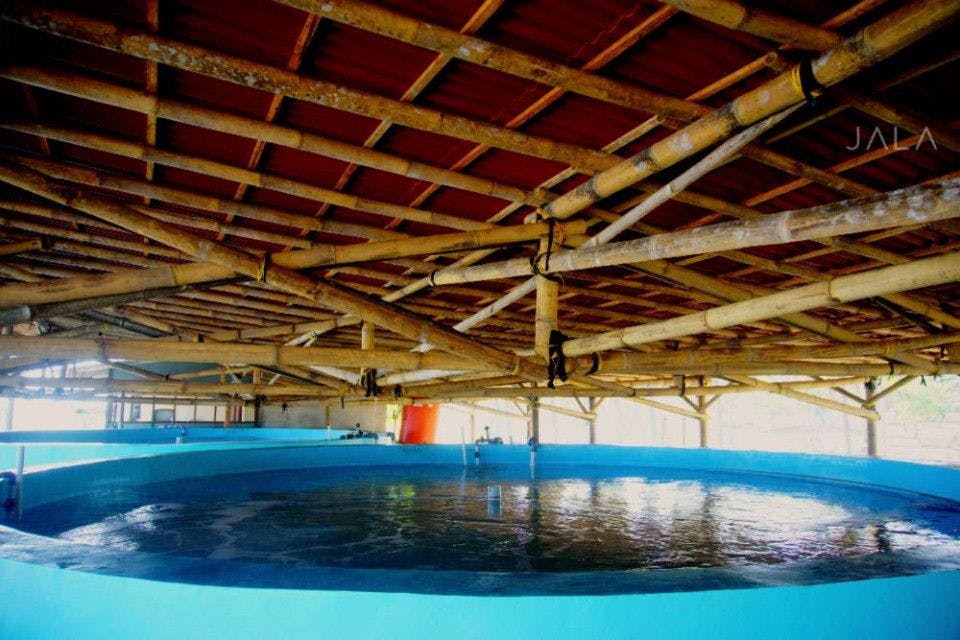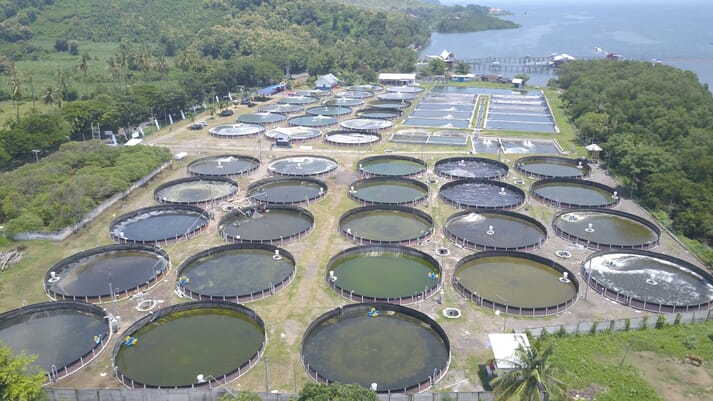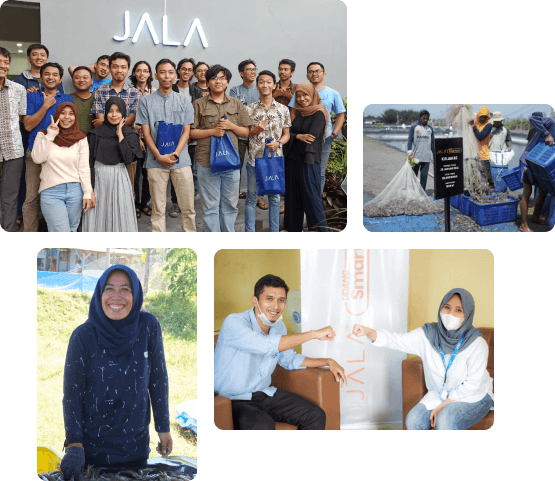
Vannamei shrimp ponds with round shapes are increasingly in demand. It happens because ponds with round shape can be conducted in the scope of the household. It is so practical; it does not need a huge amount of money and area to be developed for the scope of the household. Farmers and young entrepreneurs are now looking at this circular pond cultivation system. This is a positive condition to participate in realizing the target of increasing exports to 250% by 2024.
The circular pond has also been widely applied for the cultivation of other commodities such as catfish, iridescent shark, eels, and so on. Before deciding to follow the trend of cultivation in circular ponds, we need to pay attention to the following advantages, tips, and other things below.
What are the advantages of a circular pond?
The faster the construction, the cheaper the cost of construction. Some manufacturers even offer ready-made ponds up to portable ponds (can be easily folded and moved). The water circulation of the circular pond can be formed optimally. The bottom of the pond could be cleaner by adding a central drain in the middle of the pond for the outlet of waste disposal.
The sanitation of the pond becomes safer. The circular pond can do "self-cleaning". It happens because the velocity of the water flow generally decreases from the surface to the deepest (middle) part of the pond by sweeping or carrying organic materials to the central drain. In addition, the circular pond can minimize the dead spots which its water quality tends to be lower.
For farmers who like to explore with various cultivation methods, is suitable to have a circular pond. Various cultivation models can be tried to find out the best and optimal methods that are fit to be applied in their ponds. It can decrease the risk of spreading disease between the ponds.
The circular pond model is also suitable for the application of the latest technology in aquaculture, for example, the use of autofeeders, aerators, and water quality monitoring tools. One application of the circular pond model is presented by the millennial farms' program in Situbondo and Jepara. Circular ponds can also be applied to aquaculture technology using RAS (Recirculating Aeration System) or ZWD (Zero Water Discharge).
 Millenial Shrimp Farm Round Pool BPBAP Situbondo (Source: KKP)
Millenial Shrimp Farm Round Pool BPBAP Situbondo (Source: KKP)
Tips for cultivation in a round pond
- The pond construction should use strong materials so that it can be operated for several cultivation cycles up to several years. UseLDPE/HDPE type plastic with a steel frame or other types that are suitable for the cultivation intensity, this makes the water volume can be accommodated properly. If the construction of tarpaulin/plastic or concrete/cast is new, first remove the smell of rubber/plastic or cement so as not to disturb the comfort of the shrimp.
- Supporting equipment, at least, that must be prepared are water quality checking device, pool cleaning tools, water pumps, and aerators. The equipment is needed to support the continuity of the cultivation, especially in maintaining good water quality for the growth of shrimp.
- Sufficient water supply. Make sure the cultivation location is close to or easy to get a sufficient water supply. Healthy water is needed throughout the cultivation so a sufficient supply is also needed whenever needed.
- Quality prawns. Try to get a fry that is SPF certified, has high uniformity, and is active. Check the quality of the fry and do acclimatization before being put into the culture pond. Healthy and quality seeds are one of the keys to successful cultivation.
- High-quality prawns. Try to get prawns that have SPF certified, high level of uniformity, and active movements. Check the quality of the prawns and do acclimatization before putting them into the cultivation pond. Healthy and quality seeds are one of the keys to successful cultivation.
- Applying the principles of biosecurity. This is important as a step to prevent the entry and spread of disease sources (pathogens) in ponds. Use water that has been sterilized before use for cultivation or adding to aquaculture ponds. Cultivation equipment is also cultivated separately for each pond to minimize the spread of pathogens.
- Maintain water quality. Check regularly so that the water quality can be in the ideal range for growth. Perform treatmentif necessary to maintain water quality such as adding molasses, lime, probiotics, and various other ingredients as needed.
- Appropriate feed programto support shrimp growth. Feed is the main source of shrimp growth. The use of quality feed coupled with the right feed program will result in shrimp growth and an efficient feed conversion ratio.
- Cleaning the pool of excessive organic matter. This will be facilitated by the presence of a central drainfor siphoning. Dirt such as klekap or dead plankton on the surface of the water also need to be cleaned regularly.</span>
- Water replacement. Change the water when the pool water shows a decrease in quality. The replacement water should be of better quality. Perform water changes gradually 5-10% per day until the water shows an improvement in quality. New water is added first and then discarded. Try to operate the wheel or aerator so that the water quality is evenly mixed. Ideally, the new water that has been added has been accommodated in the reservoir in order to maintain its quality.
Pay attention to this if you decide to use a circular pond
- Still need a reservoirpool. The key to preventing incoming diseases from water sources. The reservoir provides quality water to supply the pond in changing water or adding water due to the siphonprocess.
- Pay attention to land efficiency, because not all land area can be used for ponds compared to shrimp ponds in general which are square or rectangular. There are many ends of the land that will be wasted.
- Pay attention to stocking density, no need to be too ambitious to apply fantastic stocking density. Enough with a stocking density of 100 birds per m2. The higher the stocking density, the more difficult it is to maintain in terms of maintaining water quality, waste management, and the risk of disease. If you are able to maintain a high survival rate(SR) and a low feed conversion ratio(FCR), then profits can be achieved.</span>
- During the rainy season, shrimp ponds become more vulnerable, especially shrimp that are stressed due to changes in water quality such as salinity, pH, and temperature. It can be anticipated by making an indoor/roofed pool and removing surface water from rainwater.
- It is necessary to pay attention to the strength of the base and the thickness of the plastic used. This is also related to the height and diameter of the pool so that the water pressure is distributed evenly. The recommended diameter:depth ratio is 5:1 to 10:1.
- Dead spots can form if you don't pay attention to the depth and diameter of the pond. The dead point is at the bottom corner of the pool. Proper placement of the aerator will also minimize dead spots.
- The formation of a current that is not too strong. Water currents that are too strong will actually force the shrimp to stay active so that all of their energy is used for swimming and less is stored for growth. In addition, currents that are too strong will make it difficult for the shrimp to find food. The current is created to be sufficient to collect dirt in the central drain.
2.png)
Dead point in circular pond (letters A and C) (Source: Portz et al., 2006)





